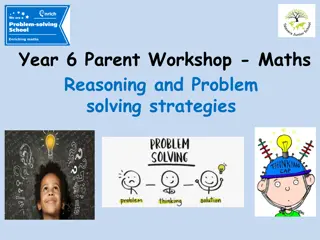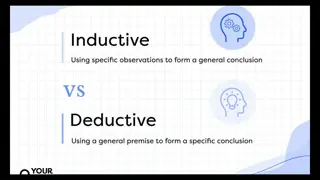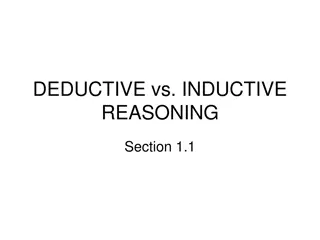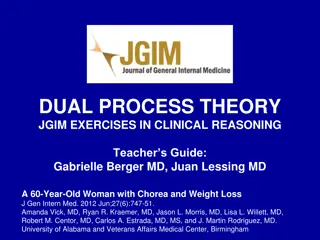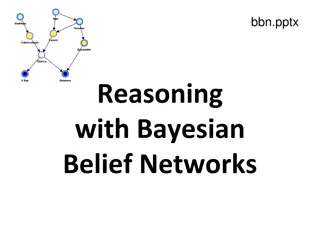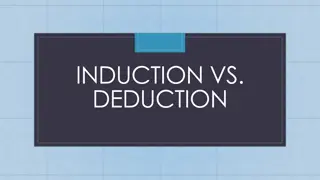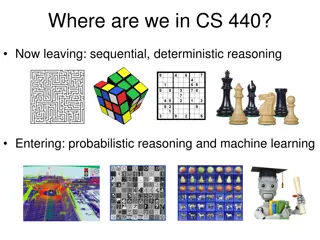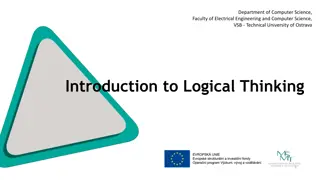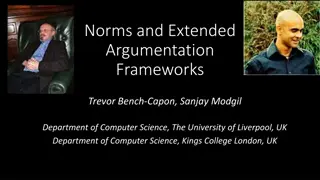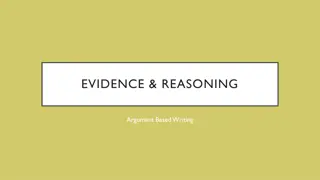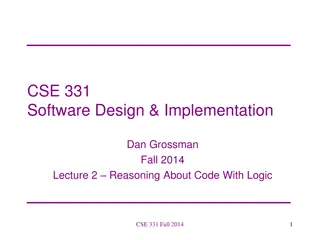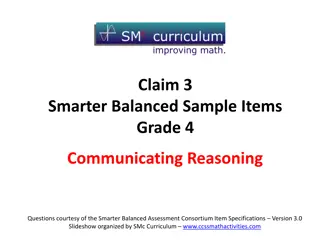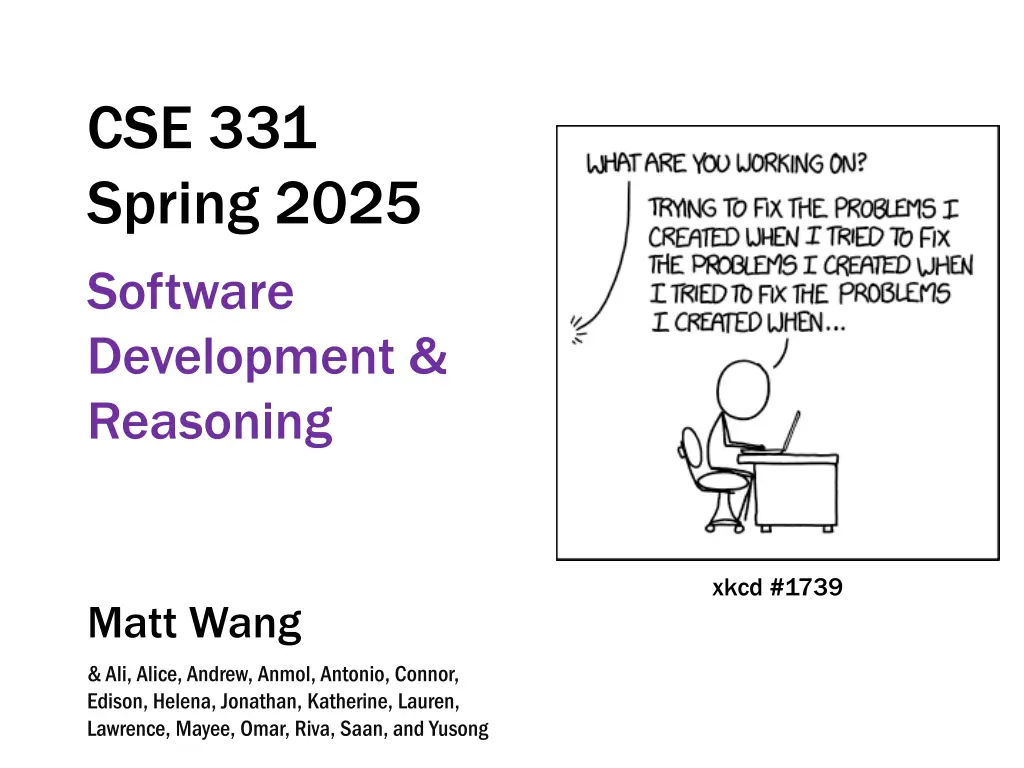
Insights into Software Development: Strategies, Challenges, and Solutions
Explore the nuances of software development, from debugging trends to bug search strategies, unit testing importance, and user feedback impact. Gain valuable insights on optimizing the development process for better outcomes.
Download Presentation

Please find below an Image/Link to download the presentation.
The content on the website is provided AS IS for your information and personal use only. It may not be sold, licensed, or shared on other websites without obtaining consent from the author. If you encounter any issues during the download, it is possible that the publisher has removed the file from their server.
You are allowed to download the files provided on this website for personal or commercial use, subject to the condition that they are used lawfully. All files are the property of their respective owners.
The content on the website is provided AS IS for your information and personal use only. It may not be sold, licensed, or shared on other websites without obtaining consent from the author.
E N D
Presentation Transcript
CSE 331 Spring 2025 Software Development & Reasoning xkcd #1739 Matt Wang & Ali, Alice, Andrew, Anmol, Antonio, Connor, Edison, Helena, Jonathan, Katherine, Lauren, Lawrence, Mayee, Omar, Riva, Saan, and Yusong
Administrivia HW4 is out! it is longer & contains math and programming we are grading on correctness now! (it is also worth more of your grade) Matt has added another office hour: 11:30-12:20 on Mondays (after A lecture) 2
HW3 Summary: Bugs & Time per Bug Average solution was ~ 120 lines of code; ~ 1 bug per 40 lines of code Minutes per Bug 40 35 30 25 % of bugs 20 15 10 5 0 0 10 20 30 40 50 60 Minutes Debugging (60 is 60+) Avg of 57 minutes per bug 34% more than 1 hour! Increasing long tail trend 3
HW3 Summary: Search Space of Bugs How many functions were searched 62% of bugs searched more than one function time require for debugging 1-2 functions 3-4 functions 5-6 functions 7+ functions 47 mins 67 mins 85 min 114 min on average, every extra function meant ~10 more mins Shrinking the search space helps a lot unit tests! defensive programming! double check that preconditions are satisfied run-time type checking of request/responses 4
Summary of HW13 HW1: type checking is important found almost 50% of the bugs HW2: mutation is dangerous cause of the most horrible kinds of debugging HW3: unit testing is important debugging a small space for ~1/3rd of bugs Debugging will still happen need to get better at quickly narrowing in on the bug 5
Software Development Process (right now) Given: a problem description (in English) Converting Ideas to Code Type Checking Testing Debugging Beta Users Beta users Beta users are understanding about failures, Regular users Regular users are completely unforgiving! (Regular users do not give credit for effort.) All Users 7
How Much Debugging? (1/2) Bugs typed in 1 per 20 lines the norm for pretty much everyone Bugs after type checking 1 per 40 lines assume 50% caught by type checker (saw 39% in HW1) Bugs after unit testing 1 per 133 lines assume 70% caught by unit testing optimistic: studies find about <70% are caught by unit testing remaining bugs are sent to beta testers 8
How Much Debugging? (2/2) Bugs after testing 1 per 133 lines assume 70% caught by testing studies find about 65% are caught by testing Testing Are rest are caught by beta users? not enough of them millions of users will find all bugs Beta Users Bugs after beta users 1 per 2000 lines number from Microsoft anything created by humans has mistakes only a small number of users give 0 stars All Users 9
How Many Bugs Sent to Beta Users? Every 2000 lines of code 100 bugs typed in 1 per 20 lines 50 bugs caught by type checker = 50 bugs (50%) 35 bugs caught by unit testing = 15 bugs (70%) Need to debug 14 bugs from beta users will still send 1 bug to regular users 10
What Kind of Bugs Sent to Beta Users? Comes back without steps to reproduce the failure only comes back with a description of the failure maybe a vague (possibly incorrect) description of steps Only sent to beta users if it type checks gets past unit tests Most such bugs often at the seams between functions multiple functions need to be debugged will take a long time to track down (many hours) we saw an extra 10 minutes for every additional function in HW3 HW3 had 700 lines industry programs will be 100,000 minimum 11
Productivity Estimate 2000 lines of code assume a familiar setting (know how to solve problems) let "h" be the number of hours to debug one such bug 5 hours 5 hours 14 * h hours typing & fixing type errors testing & fixing unit test failures debugging & fixing bugs % of Time Spent Debugging 95% 90% % of total time 85% 80% 75% 70% 2 2.5 3 3.5 4 4.5 5 5.5 6 12 Hours per Bug
What Else Can We Do? 2000 lines of code assume a familiar setting (know how to solve problems) let "h" be the number of hours to debug one such bug 5 hours typing & fixing type errors 5 hours ?? removes 11 bugs ?? 5 hours testing & fixing unit test failures 3 * h hours debugging & fixing bugs % of Time Spent Debugging 100% 90% 80% even at h=5, debugging not not the majority of time bottom programmer is 2 times times more productive 70% % of total time 60% 50% 40% 30% Debugger 20% ??? 10% 0% 2 2.5 3 3.5 4 4.5 5 5.5 6 13 Hours per Bug
How Much Room For Improvement? Suppose we could remove all 14 bugs by the end of unit testing in the same amount of time plausible since fixing unit test failures involves debugging 5 hours 3 hours 2 hours typing & fixing type errors ?? removes 14 bugs ?? testing & fixing unit test failures % of Time Spent Debugging 95% 90% would cut 90% of time spent % of total time 85% would be 10x more productive 80% "10x developer" possible in a setting where debugging is hard but can be avoided with extra effort 75% 70% 2 2.5 3 3.5 4 4.5 5 5.5 6 14 Hours per Bug
Standard Techniques for Correctness Standard practice (60+ years) uses three techniques: Tools Tools: type checker, libraries, etc. Testing Testing: try it on a well-chosen set of examples Reasoning Reasoning: think convince yourself it works correctly on all inputs have another person do the same ( code review ) think through your code carefully 16
Comparing These Techniques Differ along some key dimensions does it consider all allowed inputs does it make sure the answer is fully correct ("=") Technique Technique All Inputs All Inputs Fully Correct Fully Correct Machine Machine- -Checkable Checkable Type Checker Testing Yes No No Yes Yes Yes No Reasoning Yes Yes (*mostly) Combination removes >97% of bugs each tends to find different kinds of errors e.g., type checker is good at typos & reasoning is not humans often skip right over typos when reading 17
Avoiding Debugging in Software Development Given: a problem description (in English) Converting Ideas to Code Type Checking Reasoning Testing Debugging Beta Users Only send to beta users bugs that get past type checking, reasoning, & testing All Users 18
Debugging is twice as hard as writing the code in the first place. Brian Kernighan
Reasoning is Expected In industry In industry: you will be expected to think through your code standard practice is to do this twice( code review ) you think through your code then ask someone else to also Professionals spend most of their coding time reasoning reasoning is the core skill of programming Interviews are tests of reasoning take the computer away so you only have reasoning typical coding problem has lots of cases that are easy to miss if you don t think through carefully (not about knowing the answer to the question interviewers will throw out interviews that went too well!) 20
Automating Reasoning & LLMs Reasoning & debugging are provably impossible for a computer to solve in all cases Current LLM error rates are much higher than humans requires an (expert) human to do a lot of debugging starts with reading and understandingall the generated code probably easier to rewrite it yourself studies (so far) show little productivity improvement if it reads your mind, it saves you typing, but that's not the limiting factor if it doesn't read your mind, you must still spend time understanding it LLMs are especially bad at reasoning e.g., bad at learning formal properties e.g., bad at catching rare cases 21
Actually Correct Automated Reasoning There are non-LLM (and crucially, deterministic) approaches to automated reasoning formal methods & formal verification SAT & SMT-based solvers (incl. model checking) program synthesis automated theorem proving & proof assistants Very promising area of research, but many require graduate-level study to use many current open problems (modularity, scalability) thus, not common in most software engineering fields (yet!) 22
Reasoning Thinking through what the code does on all neither testing nor type checking can do this all inputs Can be done formally or informally most professionals reason informally we will start with formal reasoning and move to informal formal reasoning is a stepping stone to informal reasoning (same core ideas) formal reasoning still needed for the hardest problems Definition of correctness comes from the specification 23
Correct Requires a Specification Specification contains two sets of facts Precondition Precondition: facts we are promised about the inputs Postcondition Postcondition: facts we are required to ensure for the output Correctness Correctness (satisfying the spec): for every input satisfying the precondition, the output will satisfy the postcondition 24
Specifications in TypeScript: JSDoc TypeScript, like Java, writes specs in /** */ /** * High level description of what function does * @param a What "a" represents + any conditions * @param b What "b" represents + any conditions * @returns Detailed description of return value */ const f = (a: bigint, b: bigint): bigint => {..}; these are formatted as JSDoc comments (in Java, they are JavaDoc comments) 25
Preconditions & Postconditions in JSDoc Specifications are written in the comments /** * Returns the first n elements from the list L * @param n non-negative length of the prefix * @param L the list whose prefix should be returned * @requires n <= len(L) * @returns list S such that L = S ++ T for some T */ const prefix = (n: bigint, L: List): List => {..}; precondition written in @param and @requires postcondition written in @returns 26
CSE 331 Spring 2025 Proof by Calculation (& Cases) Matt Wang xkcd #2585 & Ali, Alice, Andrew, Anmol, Antonio, Connor, Edison, Helena, Jonathan, Katherine, Lauren, Lawrence, Mayee, Omar, Riva, Saan, and Yusong
Recall: Specification Specification contains two sets of facts Precondition Precondition: facts we are promised about the inputs Postcondition Postcondition: facts we are required to ensure for the output Correctness Correctness (satisfying the spec): for every input satisfying the precondition, the output will satisfy the postcondition 28
Facts (1/2) Basic inputs to reasoning are facts things we know to be true about the variables these hold for all inputs (no matter what value the variable has) typically, = or // @param n a natural number const f = (n: bigint): bigint => { const m = 2n * n; return (m + 1n) * (m 1n); }; find facts by reading along path from top to return statement At the return statement, we know these facts: n (or (or n and n 0) m = 2n and n 0) 29
Facts (2/2) Basic inputs to reasoning are facts things we know to be true about the variables these hold for all inputs (no matter what value the variable has) typically, = or // @param n a natural number const f = (n: bigint): bigint => { const m = 2n * n; return (m + 1n) * (m 1n); }; No need to include the fact that n is an integer (n ) that is true, but the type checker takes care of that no need to repeat reasoning done by the type checker 30
Finding Facts at a Return Statement Consider this code // Returns a non-negative integer. const f = (a: bigint, b: bigint): bigint => { const L: List = cons(a, cons(b, nil)); if (a >= 0n && b >= 0n) return sum(L); find facts by reading along path from top to return statement facts are math statements about the code Known facts include a 0 , b 0 , and L = cons( ) Remains to prove that sum(L) 0 31
Implications We can use the facts we know to prove more facts if we can prove R using facts P and Q, we say that R follows from or is implied by P and Q proving this fact is proving an implication Checking correctness requires proving implications need to prove facts about the return return values must satisfy the facts of the postcondition return values 32
Collecting Facts Saw how to collect facts in code consisting of "const" variable declarations "if" statements collect facts by reading along path from top to return Those elements cover all code without mutation covers everything describable by our math notation we can calculate interesting values with recursion Will need more tools to handle code with mutation 33
Mutation Makes Reasoning Harder Description Testing Tools Reasoning no mutation full coverage type checker calculation induction HW5 local variable mutation Floyd logic HW6 array mutation for-any facts HW8 heap state mutation rep invariants HW9 34
Correctness with No Mutation Proving implications is the core step other techniques output implications for us to prove core step of reasoning Facts are written in our math notation we will use math tools to prove implications Core technique is "proof by calculation" Other techniques we will need: proof by cases (today) structural induction (Wednesday) 35
Proof by Calculation Proves an implication fact to be shown is an equation or inequality Uses known facts and definitions latter includes, e.g., the fact that len(nil) = 0 37
Example Proof by Calculation Given x = y and z 10, prove that x + z y + 10 show the third fact follows from the first two Start from the left side of the inequality to be proved x + z = y + z y + 10 since x = y since z 10 All together, this tells us that x + z y + 10 38
Example Proof by Calculation (across lines) Given x = y and z 10, prove that x + z y + 10 show the third fact follows from the first two Start from the left side of the inequality to be proved since x = y since z 10 x + z = y + z y + 10 easier to read when split across lines calculation block , includes explanations in right column proof by calculation means using a calculation block = or relates that line to the previous line 39
Calculation Blocks: Equalities Chain of = shows first = last a = b = c = d proves that a = d all 4 of these are the same number 40
Calculation Blocks: Inequalities Chain of = and shows first last since x = y since z 10 x + z = y + z y + 10 = y + 3 + 7 w + 7 since y + 3 w each number is equal or strictly larger that previous last number is strictly larger than the first number analogous for 41
Calculation Blocks: Mixing Inequalities Gotcha Consider: 1 + 1 = 2 2 1 = 1 * 2 1 * 3 3 cannot derive meaningful conclusion from proof each step is still true, but cannot make final conclusion rule of thumb: inequalities should only go in one direction 42
Proving Code by Calculation: Example 1 (1/2) // Inputs x and y are positive integers // Returns a positive integer. const f = (x: bigint, y, bigint): bigint => { return x + y; }; Known facts x 1 and y 1 Correct if the return value is a positive integer x + y 43
Proving Code by Calculation: Example 1 (2/2) // Inputs x and y are positive integers // Returns a positive integer. const f = (x: bigint, y, bigint): bigint => { return x + y; }; Known facts x 1 and y 1 Correct if the return value is a positive integer since y 1 sincex 1 x + y x + 1 1 + 1 = 2 1 calculation shows that x + y 1 44
Proving Code by Calculation: Example 2 (1/2) // Inputs x and y are integers with x > 8 and y > -9 // Returns a positive integer. const f = (x: bigint, y, bigint): bigint => { return x + y; }; Known facts x 9 and y 8 Correct if the return value is a positive integer x + y 45
Proving Code by Calculation: Example 2 (2/2) // Inputs x and y are integers with x > 8 and y > -9 // Returns a positive integer. const f = (x: bigint, y, bigint): bigint => { return x + y; }; Known facts x 9 and y 8 Correct if the return value is a positive integer since y -8 sincex 9 x + y x + -8 9 8 = 1 46
Proving Code by Calculation: Example 3 (1/2) // Inputs x and y are integers with x > 8 and y > -9 // Returns a positive integer. const f = (x: bigint, y, bigint): bigint => { return x + y; }; Known facts x > 8 and y > 9 Correct if the return value is a positive integer x + y 47
Proving Code by Calculation: Example 3 (2/2) // Inputs x and y are integers with x > 8 and y > -9 // Returns a positive integer. const f = (x: bigint, y, bigint): bigint => { return x + y; }; Known facts x > 8 and y > 9 Correct if the return value is a positive integer since y > -9 since x > 8 x + y > x + -9 > 8 - 9 = -1 warning warning: avoid using > (or < ) multiple times in a calculation block 48
Proving Code by Calculation: Example 4 (1/2) // Inputs x and y are integers with x > 3 and y > 4 // Returns an integer that is 10 or larger. const f = (x: bigint, y, bigint): bigint => { return x + y; }; Known facts x 4 and y 5 Correct if the return value is 10 or larger x + y 49
Proving Code by Calculation: Example 4 (2/2) // Inputs x and y are integers with x > 3 and y > 4 // Returns an integer that is 10 or larger. const f = (x: bigint, y, bigint): bigint => { return x + y; }; Known facts x 4 and y 5 Correct if the return value is 10 or larger since y 5 sincex 4 x + y x + 5 4 + 5 = 9 proof doesn t work because the code is wrong code is wrong! 50
Using Definitions in Calculations Most useful with function calls cite the definition of the function to get the return value For example: sum(nil) sum(x :: L) := 0 := x + sum(L) Can cite facts such as sum(nil) = 0 sum(a :: b :: nil) = a + sum(b :: nil) second case of definition with x = a and L = b :: nil 51

